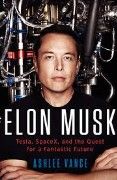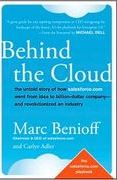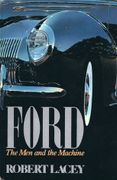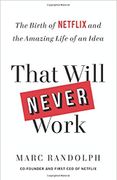
A 5 Minute Overview Of
Elon Musk
Tesla, Spacex, and the Quest for a Fantastic Future
About the Author
Ashlee Vance is a technology writer. He spent several years writing about Silicon Valley and technology for the New York Times, The Register and The Economist. He then went to Bloomberg Businessweek where he has written dozens of cover stories and features. Like Elon Musk, Ashlee Vance was born in South Africa but grew up in the United States and graduated from Pomona College.
Sections in this Books
Summaries.Com has a 30 minute summary of this book, which is available to premium subscribers. Here is the first paragraph of each section in the 30 minute summary.
1. The early days. Elon Reeve Musk was born in Pretoria, South Africa, on June 28, 1971. His father Errol was an engineer and serial entrepreneur and as a child, Elon would sometimes accompany his father to Zambia where Errol owned part of an emerald mine. Elon's mother, Maye, was a dietician and well-known fashion model. Elon's family expanded with the birth of his brother Kimbal and soon thereafter his sister Tosca…
2. Start-up. In the summer of 1994, Elon Musk and his brother Kimbal set off on a road trip across the United States driving a beat-up 1970s-vintage BMW 320i. They started at San Francisco where Elon had an intern for the summer and ended up back at Pennsylvania. Along the way, the brothers discussed all sorts of ideas including starting an online network for doctors…
3. X.com and PayPal. Now armed with cash, Elon Musk decided it was time to launch a full-service online bank. Most people considered this was an audacious move given the fact consumers at that time were reluctant to even enter their credit card details on websites. After all, Amazon was just starting to sell books online. Even more daunting, the regulatory hurdles which would need to be negotiated looked like an intractable problem but Elon Musk was confident he would be able to run the gauntlet. He incorporated X.com in March 1999 and started recruiting software engineers and developing his business plan…
4. SpaceX. Elon Musk had married in early-2000 but his belated honeymoon had been interrupted by the boardroom coupe at X.com. When he finally managed to get away in December 2000 for a couple of weeks at a South African game park, he caught malaria. He was hospitalized in California on his return and spent 10 days in intensive care. Elon Musk required a good six months to recover and lost forty-five pounds over the course of the illness…
5. Tesla Motors. In the fall of 2003, Stanford graduate J.B. Straubel came to see Elon Musk at SpaceX trying to get him to invest in a project to build an electric airplane. Musk didn't like that idea but was very interested when Straubel described a side project to build an electric car using lithium ion batteries. That really struck a chord with Musk who invested $10,000 on the spot…
6. Near-death experience. Despite all the progress Tesla had made, by 2008 the company had spent $140 million to develop its Roadster — slightly more than the $25 million originally estimated in its 2004 business plan. To make matters worse, the financial markets had gone into meltdown in the worst financial crisis since the Great Depression. And, just to make things really interesting, this was also about the same time that SpaceX made its second launch attempt which ended up in failure. Musk's $200 million fortune from the PayPal sale was rapidly disappearing with depressingly little to show for it…
7. To infinity — and beyond. SpaceX has continued to grow and flourish at an impressive clip since the end of 2008 when the company received its first NASA contract. Today, the company's Falcon 9 rocket is considered the reliable workhorse of the space industry. SpaceX on average now launches a rocket once a month, carrying satellites into orbit for various nations and corporations. The company has also successfully completed a number of supply runs to the International Space Station…
8. Electric cars. After nearly going out of business altogether at the end of 2008, Tesla stunned the automotive world by releasing its Model S sedan in the middle of 2012. This stylish all-electric luxury vehicle has a battery pack which makes up the base of the car and a watermelon-sized electric motor located between the rear tires. It can go for more than 300 miles on a single charge and accelerates from zero to 60 miles per hour in a stunning 4.2 seconds…
9. Solar city and the future. When the heat was on to save SpaceX and Tesla from bankruptcy, Elon Musk had received a $15 million payout from the sale of his cousin's company which saved the day. In 2006, those same cousins, Lyndon, Peter and Russ Rives, decided they wanted a new challenge. They started a company called SolarCity to install solar panels into houses. Elon Musk became the company's chairman and its largest shareholder…
Introduction
Here is the contents of section 1 out of 9 from the 30 minute summary available to Summaries.com premium subscribers.
Elon Reeve Musk was born in Pretoria, South Africa, on June 28, 1971. His father Errol was an engineer and serial entrepreneur and as a child, Elon would sometimes accompany his father to Zambia where Errol owned part of an emerald mine. Elon's mother, Maye, was a dietician and well-known fashion model. Elon's family expanded with the birth of his brother Kimbal and soon thereafter his sister Tosca…
Blessed with a photographic memory and a prodigious appetite for reading, Elon did well at high school although the other students didn't take well to his academic prowess. Unfortunately, his parents divorced during his teenage years and at age seventeen Musk left South Africa for Canada. His mother Maye was a Canadian citizen and Elon was able to get a Canadian passport thanks to that. He arrived in Montreal unannounced and spent about a year traveling around Canada, working odd jobs and looking up distant family members.
Eventually, Elon ended up enrolling at Queen's University in Kingston, Ontario. He chose Queen's because Elon considered it had more good-looking women than other universities. By the time his brother and sister joined him in Canada, Elon and Kimbal would get into the habit of cold-calling interesting people and asking if they would be available to meet at lunch. They got to meet all kinds of influential people that way including the head of marketing for the Toronto Blue Jays baseball team, a business writer for the Globe and a top executive at the Bank of Nova Scotia.
Elon Musk studied business and competed in university speaking contests with a brand of intensity and competitiveness that would become his trademark later in life. He also started selling computer parts and fully built PCs in his dorm to make some extra cash. He was beginning to excel academically and after two years at Queen's, Musk was able to transfer to the University of Pennsylvania on a scholarship. He decided to pursue an economics degree from Wharton School and a bachelor's degree in Physics.
Musk did even better at Penn. He and Adeo Ressi, his roommate, left the dorm and rented a ten-bedroom house near the campus. During the week they would study but on the weekends, they transformed their house into a nightclub where they would charge five dollars admission for all-you-can-drink. It was not unusual for as many as five hundred students to turn up on a Friday or Saturday night — allowing Elon and Adeo to make an entire month's rent in one night. The parties became legendary around campus.
While at the University of Pennsylvania, Musk wrote a paper detailing "the power station of the future" which consisted of giant solar arrays in space transferring power to Earth via microwave. (His professor gave him a 98 for that paper). He also wrote a second paper which talked about putting all the world's information in a single database and a third which talked about the commercial potential of ultracapacitors as energy storage devices. (He got a 97 for this paper.)
Musk's clear, concise writing is the work of a logician, moving from one point to the next with precision. What truly stood out, though, was Musks's ability to master difficult physics concepts in the midst of actual business plans. Even then, he showed an unusual knack for being able to perceive a path from a scientific advance to a for-profit enterprise.
Musk briefly toyed with the idea of getting into the videogame business after college but didn't feel he would be able to make much impact if he went down that path. Instead, he wanted to do something important in one of the three areas which he believed were right on the cusp of significant technology breakthroughs — the Internet, renewable energy and space. Musk vowed to pursue projects in all three areas simultaneously which most of his acquaintances viewed as crazy at the time. He wasn't so much consumed by the idea of becoming rich — instead Elon Musk wanted to make a difference in the world and believed he could.
I really was thinking about this stuff in college. It is not some invented story after the fact. I don't want to seem like a Johnny-come-lately or that I'm chasing a fad or just being opportunistic. I'm not an investor. I like to make technologies real that I think are important for the future and useful in some sort of way.
Want in-depth 30-minute summaries?
In addition to this 5-minute overview, Summaries.Com has a premium 30-minute summary of this book and 1,000+ more, to help you advance your career and business.
Check Out Summaries.com Premium Plans Today!Want more 5-minute Snapshots?
To get a new 5-minute business book snapshot each week, sign up for the Summaries.com free plan.
Sign Up for the Summaries.com Free PlanBusiness Biographies 101 Collection
If you enjoyed this summary, here is a collection of related business book summaries, to help you get ideas and strategies that will give you an edge over your competition.
Be inspired by what people and companies have done ... and continue to do.
Buy Business Biographies 101 Collection (5 x 30-Min Summaries)
Elon Musk
Tesla, Spacex, and the Quest for a Fantastic Future
by Ashlee Vance

Behind the Cloud
The Untold Story of How Salesforce.com Went From Idea to Billion-Dollar Company– and Revolutionized an Industry
by Marc Benioff

Ford
The Men and the Machine
by Robert Lacey

Hard Drive
Bill Gates and the Making of the Microsoft Empire
by Bill Gates

That Will Never Work
The Birth of Netflix and the Amazing Life of an Idea
by Marc Randolph